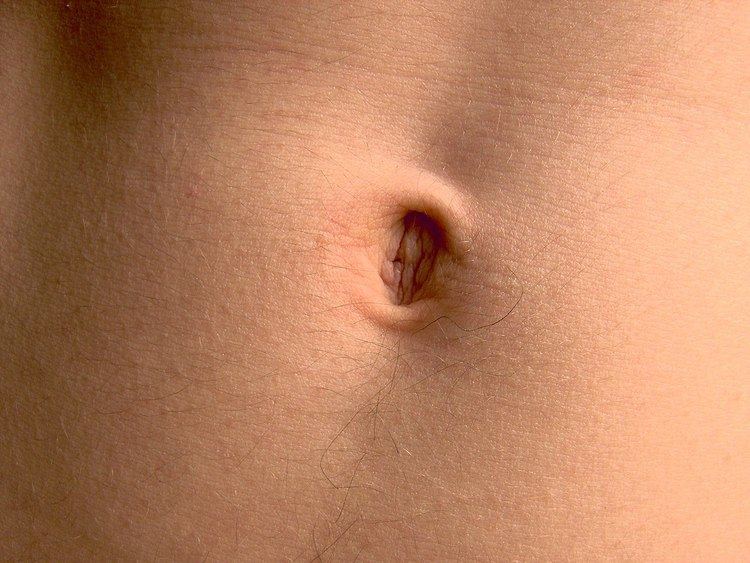Latin Umbilicus Dorlands/Elsevier u_02/12836058 | MeSH D014472 | |
 | ||
Precursor Umbilical cordDuctus venosus | ||
The navel (clinically known as the umbilicus, colloquially known as the belly button, or tummy button) is a hollowed or sometimes raised area on the abdomen at the attachment site of the umbilical cord. All placental mammals have a navel.
Contents
Structure
The umbilicus is used to visually separate the abdomen into quadrants.
The umbilicus is a prominent mark on the abdomen, with its position being relatively consistent among humans. The skin around the waist at the level of the umbilicus is supplied by the tenth thoracic spinal nerve (T10 dermatome). The umbilicus itself typically lies at a vertical level corresponding to the junction between the L3 and L4 vertebrae, with a normal variation among people between the L3 and L5 vertebrae.
Parts of the navel include the "umbilical tip", which is the center of the navel often described as a button shape. The "periumbilical skin" surrounds it. Navels consisting of the umbilical tip protruding past the periumbilical skin have been nicknamed "outies". Outies are often mistaken for umbilical hernias, but are actually a completely different shape with no health concern, unlike an umbilical hernia. The navel (specifically abdominal wall) would be considered an umbilical hernia if the protrusion was 5 centimeters or more. The total diameter of an umbilical hernia is usually 10 centimeters.
While the shape of the human navel may be affected by long term changes to diet and exercise, unexpected change in shape may be the result of ascites.
Disorders
In addition to change in shape being a possible side effect from ascites and umbilical hernias, the navel can be involved in umbilical sinus or fistula, which in rare cases can lead to menstrual or fecal discharge from the navel. Menstrual discharge from the umbilicus is associated with umbilical endometriosis, a rare disorder.
Other disorders
Surgery
To minimize scarring, the navel is a recommended site of incision for various surgeries, including transgastric appendicectomy, gall bladder surgery, and the umbilicoplasty procedure itself.
Safety
Abdominal thrusts is a first aid method of dislodging an object stuck in the throat, and is performed just above the navel.
Society and culture
The public exposure of the male and female midriff and bare navel has been taboo at times in Western cultures, being considered immodest or indecent. It was banned in some jurisdictions, however the community perceptions have changed and exposure of female midriff and navel is more accepted today and in some societies or contexts, it is both fashionable and common, though not without its critics.
While the West was relatively resistant to midriff-baring clothing until the 1980s, it has long been a fashion with Indian women. The Japanese have long had a special regard for the navel. During the early Jomon period in northern Japan, three small balls indicating the breasts and navel were pasted onto flat clay objects to represent the female body. The navel was exaggerated in size, informed by the belief that the navel symbolizes the center where life begins.
